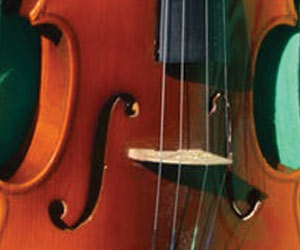Antonio Stradivari: His Life and Work
Select Format
Select Condition 
Book Overview
Leading appraisers of fine musical instruments agree that in the art of making violins, no one has ever gone beyond the achievement of Antonio Stradivari. The incomparable visual beauty of his instruments and the infinite variety and magnificence of tone of which they are capable have by this time passed into the realm of legend. Collectors have paid many thousands of dollars for one of Stradivari's violins. It is strange, but true, that only one book really delves into the life and art of this famous Italian craftsman. That is the book published in 1902 by the three Hill brothers of the London violin-making firm. Expert violin-makers and critics of superior violin craftsmanship, these men had unique opportunities to examine and compare almost all of the great examples of Italian violin-making. The larger divisions of the book concern the ancestry of Stradivari; his violins, viols, and violoncellos; his aims in relation to tone; his materials; his varnish; his construction; his labels; the number of instruments he made; the growth of their reputation. Some of the topics discussed under these main headings are: Stradivari's apprenticeship to Amati; comparison of his work with that of Amati; the tone of the pre-1684 Stradivari violin; changes between 1684 and 1690; distinguishing characteristics of many existing violins, violas, and cellos, their specific location, etc.; erroneous views concerning Stradivari's material; his preference for the wood of certain trees in given years; the mystery of the ingredients of Stradivari's varnish; the effect of varnish on tone; the measurements of Stradivari's instruments; the time spent by Stradivari in making a violin; the years of greatest production; the largest number dating from one year; estimate of the total number made; an estimate of the actual sum he charged for an instrument; the introduction of Stradivari instruments into France and England; the first revelation of their supreme merit; and many other interesting topics. Musicologists, violinists, makers of instruments, historians of culture, and those who count themselves simply as music lovers will find this to be an extremely interesting and informative account.
Format:Paperback
Language:English
ISBN:0486204251
ISBN13:9780486204253
Release Date:June 1963
Publisher:Dover Publications
Length:400 Pages
Weight:0.95 lbs.
Dimensions:0.7" x 5.4" x 8.3"
Customer Reviews
2 ratings
It remains the definitive text a century later
Published by Thriftbooks.com User , 19 years ago
The style may seem quaint, but if you have spent any time at all reading scholarly works from this time period, you will find that Hill's prose is far from unreadable. By and large, I continue to find Hill's style to be readily approachable after 3 decades worth of repeated readings. In any case, the prose is not what makes this work invaluable. Like another reviewer stated, you cannot do any study of Stradivari instruments without first consulting Hill, and Hill remains the foundation of all scholarly work concerning Stradivari, even a century later. While not exactly for laymen, nonetheless this book is relatively accessible to those who have only a passing knowledge in stringed instruments. For those more expert, Hill remains the essential starting point. If you have a young violinist in your family, I would recommend this book as a gift. I still have my decades-old book, received one Christmas long long ago, and I am glad that I got it.
One of the essential texts
Published by Thriftbooks.com User , 24 years ago
This is perhaps the most important book ever published relating to the topics of violin making and the unchallenged greatest maker of all times. The Hills are the most respected scholars, ever, of the violin, and this was a landmark publication in 1902 and remains so. Under the quaint language is the information that subsequent scholars have used as the basis of their understanding of Stradivari's work (and stolen for the basis of many of their own articles and books), and almost everything written in the book is still considered accurate--an unprecedented event in violin publishing, where there's much more myth than fact in many books, especially those of the past, many of which are essentially fiction posing as non-fiction. There is simply no reason not to own this book if you are interested in violins.
Antonio Stradivari: His Life and Work Mentions in Our Blog

12 Reasons Why Stradivarii Sing in Celebration of National Violin Day
Published by Beth Clark • December 13, 2018
With only 500 left in the world, the ethereal and legendary Stradivarius violin is a work of alchemical art that some of us will get to see, a few will get to hear, and a handful may get to touch, but only the true elite of the musical world (or the extremely rich) will ever get to play. Below are 12 reasons why Stradivarii are unique and worthy of reverence.





